Note: This data was previously posted on another blog by one of our members. This is the same data as that post; but now under Verus, as he works with us and it is personal data and knowledge that we feel should be shared
In this
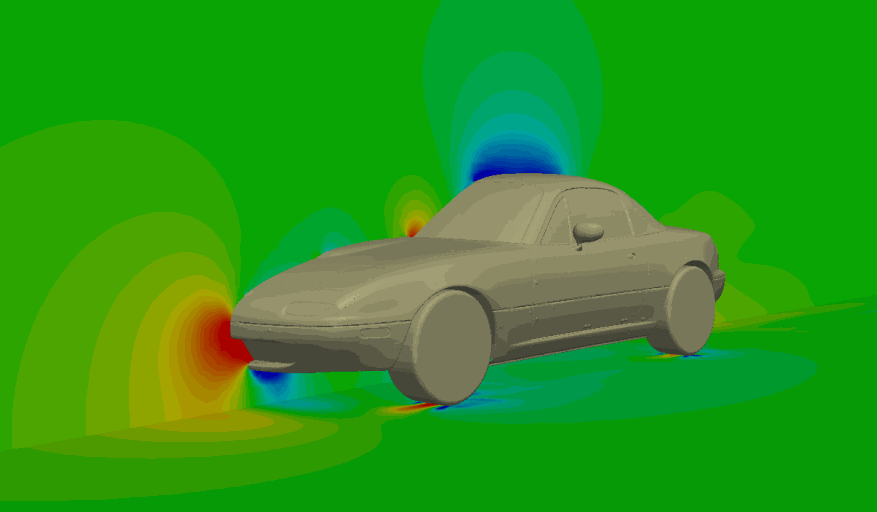
Factory NA Mazda Miata CFD
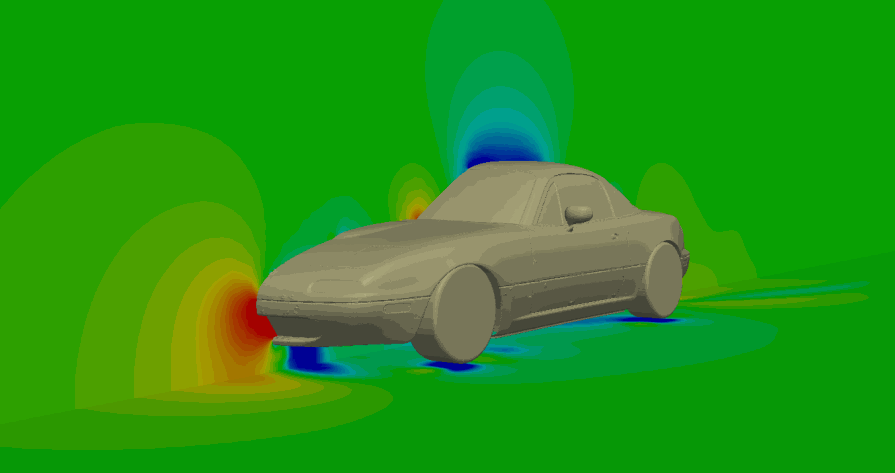
Factory NA Mazda Miata Lowered to 4in Ride Height CFD
There are 6 total cases we study.
Stock 1990-1997 NA Mazda Miata
Stock 1990-1997 NA Mazda Miata Lowered to a 4 Inch Ride Height
Small Front Air Dam at 4in Ride Height
Small Air Dam with Splitter at 4in Ride Height
Large Air Dam at 4in Ride Height
Large Air Dam with Splitter at 4in Ride Height
Note: The air dam and/or splitter is 2 inches off the ground in study 3-6
The solver used for these analyses was a steady-state incompressible solver with a k-omega SST turbulence model. OpenFOAM was used for pre-processing and solving and all post-processing was done using Paraview and excel.

Cd = coefficient of drag, Cl = coefficient of lift and L/D = lift divided by drag / aerodynamic efficiency
Downforce: Negative numbers indicate lift, positive numbers indicate a downward force.
Drag between all setups is all fairly close with the least drag being the setup with the large front splitter with
The stock Miata simulation (CFD run) had a calculated coefficient of drag of 0.36. The 1990-1997 Mazda Miata had a published coefficient of drag of 0.38. The CFD case having slightly lower drag is expected from the simplification of the vehicle vs. the real car.
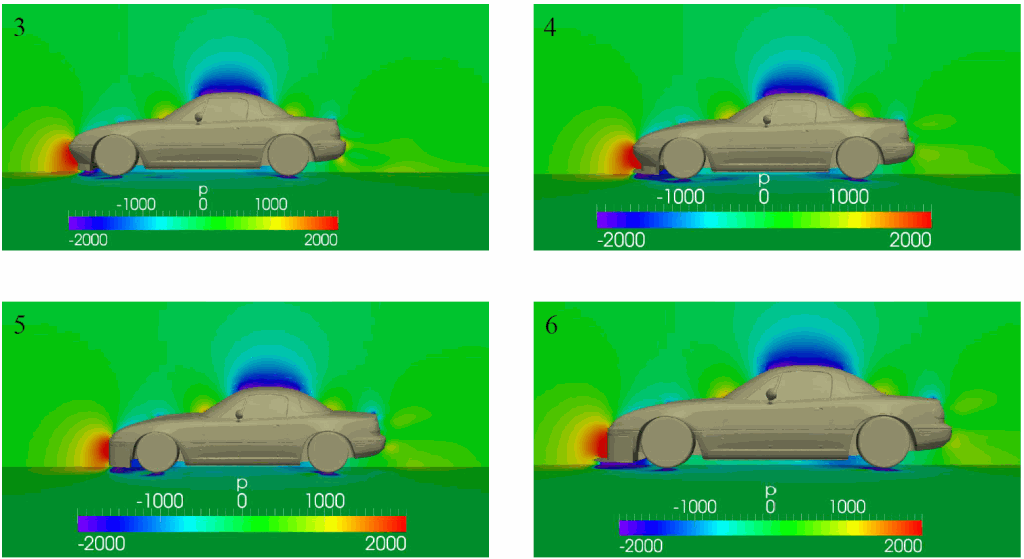
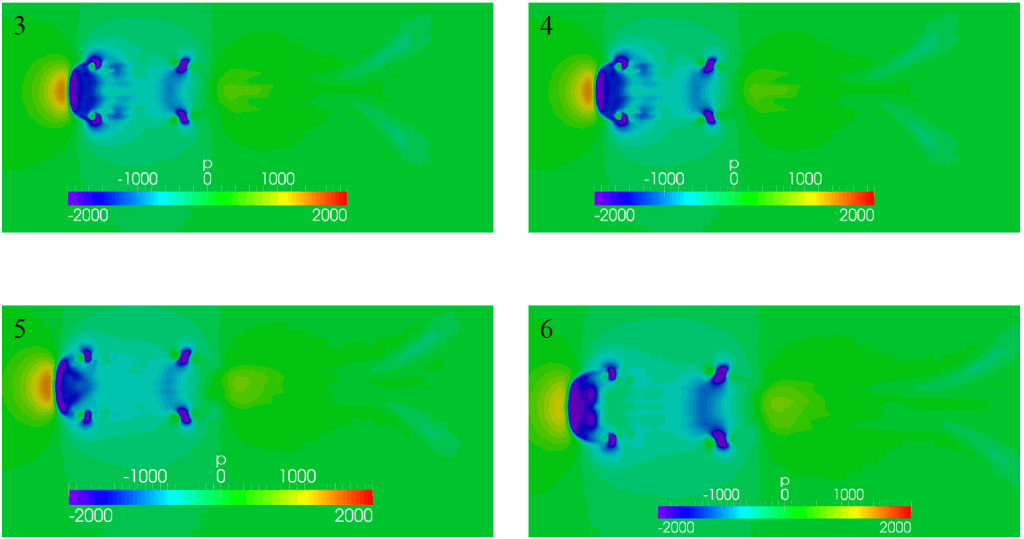
These photos really emphasize how different setups a
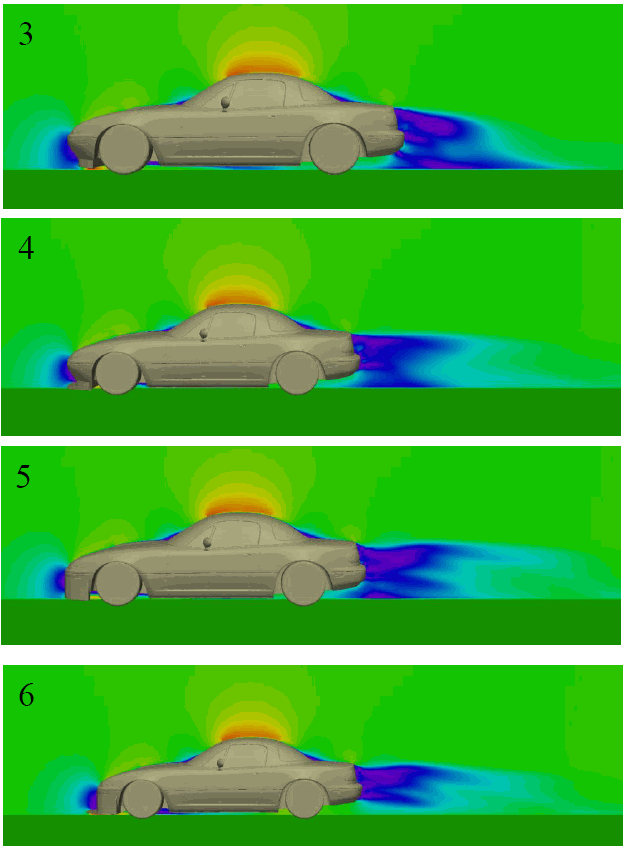
These pictures show how setups influence how fast the air moves around the car. What is interesting is how much the setups on the front change the airflow behind the car.
Take a close look at all of the photos. Each one paints a different picture and changes how the car reacts when driven at speed. So, which one is best? There really is no “best” design. There are compromises for each design. Multiple things should be considered when designing a system. Things like L/D, downforce, and aero balance should be considered. These can and likely will change from track to track and from car to car. It is generally recommended to decide on the rear aero first, and then design the front to balance the car back out.
Please let us know if you have any questions below. Thank you for your time.
Air Dam or Splitter - A Closer Look